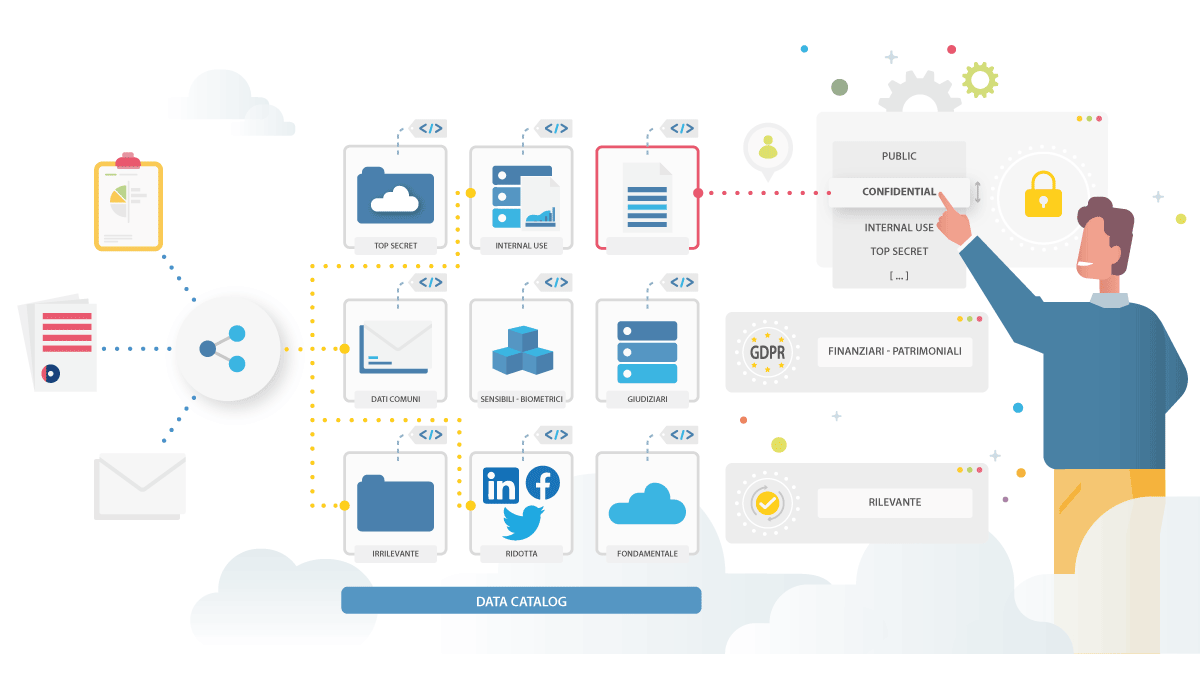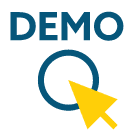Data classification is the process of organizing data assets. It means establishing a categorization and defining one or more taxonomies for the whole company.
A classification system helps to effectively determine priorities and the intensity of actions on data. It is based on such criteria as criticality, security, access and use, privacy, ethics, data quality and storage requirements.
The need to develop a “data culture” has been growing ever since companies understood data’s real value for business. In practice, it means following these steps:
- identify relevant and critical data for the business
- set definitions for the entire company
- specify their role in business processes
- identify the links with the physical data that represent them in computer systems.
Only a metadata system managing all of the above makes it possible to design and build automated control systems that can determine efficiently and sustainably the quality of critical data for business processes.
A targeted classification, combined with other data management features, aims at a more conscious and smooth use of data as a key element. The application areas may include:
- business risk assessment process,
- valueing data to determine various levels of security, quality, confidentiality,
- in response to various emerging business needs.
How does it work?
Data Classification usually leads to creating a metadata repository. Then you can make decisions or “tag” data objects to facilitate their use and govern them throughout the life cycle. This repository allows to focus analytical efforts primarily on the most important and critical data sets. Differentiating low-value from high-value data is essential. To do so, define appropriate security controls for each data type. For example, more relevant data require stronger protection mechanisms. Data Classification is a time-consuming, step-by-step process. It has certain legal and business implications.
It all begins with defining Data Governance policy. Business processes, the inventory of software and hardware where the data reside should be appropriately mapped. Then you need to establish and exercise clearly defined processes that regulate the stages of proposal, approval, publication as well as the Business Term semantics and more. The same concerns the processes that determine roles and responsibilities.
Once you have defined the “guide rules” it’s important to start as soon as possible to:
- search for the first areas of application. With the help of data specialists (e.g. Data Owner, System Owner, Data Stewart – depending on the company’s policies) identify the data involved and the processes they govern. Further, define data classification and relevance, risk profile, domains and relationships, upstream and downstream processes, etc.
- map who has access to the data. Define the user roles that can access certain data.
- approve a retention policy. Depending on the industrial sector the company belongs to, it determines how long to store the data and how (and with what tools) to destroy them.
- identify data visibility. Specify the data for internal use (wide or selected), the data to be made public and the data to mask based on Data Owner’s indications. This is done to protect intellectual property or to meet regulations in force.
- define a continuous updating and enrichment process. Without this constant supervision, the glossary contents and structure soon become useless. They neither adapt to evolving internal demands nor keep up with the changes in the company.
Finally, it is essential to assign the role of a supervisor that is aware of the importance of data and its value in the company. Their tasks are regulated in the Data Governance policy, first of all the Chief Data Officer and Data Owners.
Irion EDM platform makes it easy to regulate data access, represent and navigate data assets. It has advanced research functionality to explore the data and discover the connections between them to find hidden value for business, intercept and minimize risks, and take quicker managerial decisions.
Irion EDM: the platform for Data Classification and more.
Irion EDM is a completely metadata driven Enterprise Data Management system.
It uses classification tools integrated with the most innovative Irion EDM technologies to:
- find data assets, no matter where they reside, by using IrionEDM’s many connectors and advanced data discovery techniques. This accelerates your project;
- create a shared Data Catalog containing relevant business data;
- set ownerships, protection rules, segregation and quality, retention policies and everything that is relevant to the business. All in compliance with current external and company regulations;
- improve the understanding of business processes. One needs to see data quality and origins, if they are under strict regulatory rules (for example, those of privacy), and if other offices reuse them. It is also important to know the managed data value and importance to optimize their use;
- detect Data Lineage relationships. Then you can trace data transformations over time, who uses data and for which business process.
Want to know more?
We will provide you with illustrative examples of how other organizations have already started their transformation.






